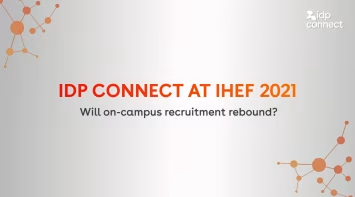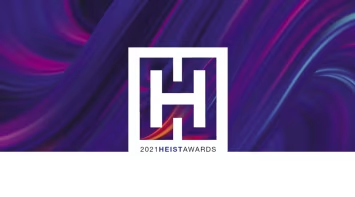Your institution’s international recruitment strategy likely includes some form of digital marketing, whether it’s social media, online lead generation, or email campaigns. Digital tactics are essential to reaching Gen-Z and provide a cost-effective means to connect with students across the globe. Many institutions experienced the advantages of digital marketing during the pandemic, when traditional recruitment methods were not possible, and will continue to include these tools in their strategy moving forward.
Despite the growing prevalence of digital marketing in international higher education recruitment, not all institutions are taking advantage of one extremely effective, affordable marketing tool: retargeting. Retargeting, a method of advertising directly to users who have already shown an interest in a company or product, has dominated the internet in recent years. The technique provides numerous advantages over other less targeted forms of advertising, by directly reaching the customers who are most likely to convert.
To succeed in the increasingly competitive digital marketing landscape, higher education institutions should consider adding retargeting to their marketing mix. This article will explore how retargeting works, how it can benefit your institution, best practices for how to launch a campaign, and a case study from The Boston Architectural College.
What is retargeting?
Retargeting is a form of online advertising that targets past website visitors by placing customized ads onto sites they later visit. A pixel (a small piece of JavaScript code that is unnoticeable to site visitors) is embedded on a website, and leverages first-party cookies (or browser cookies) to track digital users’ browsing behavior. Then, after the user leaves the website, the pixel data is used to deliver ads to relevant users as they continue to browse across the internet.
Why is this such an effective strategy? Because people need to hear about a product and interact with a brand multiple times before deciding to purchase. The classic “Marketing Rule of Seven” tells us that a prospect needs to “hear” an advertiser's message at least seven times before they’ll take action. This maxim was developed in the 1930s, but the essence still holds true today. In fact, in today’s busy digital world, and considering the high-involvement decision of where to study abroad, the actual number is likely much higher than seven. Retargeting ads keep your institution top-of-mind and provide repeated brand exposures to prospective students who have already shown an interest in your institution.
How does an IDP retargeting campaign work?
Retargeting campaigns can be implemented in a number of ways, through social media, websites, or list-based retargeting. Google and Facebook are two of the most common platforms offering retargeting, and advertising agencies will manage campaigns for you. The benefit of running a retargeting campaign with IDP is that you reach millions of prospective students across our suite of world-leading student-facing websites.
Our 40+ connected websites receive more than 100 million annual visits. We have the largest digital presence of any provider and operate sites across Latin America, Brazil, the Middle East, Turkey, Russia, India, Thailand, Vietnam, and Indonesia.
So how does it work? A prospective student visits your Content Hub on one of our Hotcourses websites, and the interaction is captured using a pixel. After the student leaves the website, they will be served advertisements for your institution as they continue to browse online. It keeps your school top of mind for the student, as it “follows” them across the internet.
You can use multiple different kinds of creative, and multiple ad formats such as dynamic/personalized, static image, rich media, video, or carousel ads.
A huge benefit of retargeting is that you set the audience criteria. IDP experts will work with you to determine the best target audience, based on country, level of study, or even competitor sets. You can provide a list of competitor institutions, and your ads will then be served to students who visited these competitors’ profiles on Hotcourses sites.
Retargeting campaigns with IDP typically run for a few months, and are evaluated based on number of impressions, clicks, and CTR (click-through rate). A typical IDP retargeting campaign aims to deliver 100 million impressions or more.
How can retargeting benefit your institution?
Retargeting with IDP provides several benefits for your institution over more traditional forms of advertising. Generally, it is more impactful, targeted, and cost-effective than other digital ads. It is a great add-on to complement your existing Core or Digital Marketing partnership with IDP.
Target a Tailored Audience
Retargeting is an effective strategy to focus on a specific audience. This makes it a great tool for specialty schools, or if your office has been tasked to increase applications for a specific program or from a certain region. For example, you can set the criteria to target only hospitality students from Saudi Arabia, or only business undergrads from Southeast Asia.
Diversification
The targeted digital pinpointing that retargeting allows can help with diversification goals by allowing you to explore new markets at a low cost. If you don’t have the budget to travel to a new market, you can explore it through retargeting. It’s a simple way to add new markets to your recruitment strategy at a low cost. If you gain traction in a new market through digital marketing, it can serve as justification to travel to the market.
Cost-effective
Retargeting helps you maximize cost-effectiveness by putting your advertising dollars where they count – towards prospective students who have already shown an interest in your institution. Retargeted ads have a CTR (click-through rate) ten times that of ordinary display ads meaning you can spend less to get connected to more high-quality leads.
Better Leads
Speaking of lead quality, retargeting produces high-quality, vetted leads that are easier to work through the admissions funnel. They have already sought out information on your institution and are likely serious about studying abroad.
Tips & Tricks
Retargeting campaigns need to be set up strategically to maximize returns. IDP team members will work with you to build a campaign that meets your goals, whether they are brand awareness or increasing applications. Below are some best practices for how to set up an effective retargeting campaign.
Use a CTA (call-to-action) that resonates
Effective retargeting advertisements have a clear CTA that encourages users to take the next step. Choosing your language is important here. Even if your end goal is to increase applications, “Learn more” might be a more effective CTA than “Apply now,” because students who are in the early stages of their research may not be ready to apply but are interested in getting more information. The more general CTA allows you to capture the quality lead, and then nurture them through to application.
Start with a wide net and adjust based on performance
You set your own criteria based on country, level of study, or competitor sets. Generally, it’s more effective to start with more broad criteria. Then, you can adjust the settings of your campaign based on performance. IDP staff will check in with you during the campaign and suggest adjustments as necessary.
Develop Quality and Engaging Creative
Use engaging images, always highlight your logo and branding on your ads to enhance brand recognition, consider translated ads, and use images that represent the student segment you are targeting. Since retargeting allows you to get specific with your audience, make sure that your creative speaks to this specific audience.
Avoid ad fatigue
A high volume of ad exposure can lead people to lose interest in ads, a phenomenon known as ad fatigue. Avoid ad fatigue by rotating creative assets, setting frequency caps, and closely monitoring and optimizing campaigns.
Case study: The Boston Architectural College
Our latest case study explores the results of a highly effective retargeting campaign at The Boston Architectural College (The BAC). The objective of The BAC’s retargeting campaign was to deliver one million impressions to audiences searching for undergraduate and graduate programs at an established set of competitor institution profiles on Hotcourses websites.
The BAC’s retargeting campaign delivered successful, full-funnel results:
Exceeded objectives in terms of impressions, clicks, and click-through rate
Produced interactions from students in a diverse mix of countries, including Venezuela, Turkey, Brazil, and India
During the campaign period, web clicks to The BAC’s Hotcourses profile increased by 37.5%.
Read the case study to explore the full results of the campaign and its impact at the BAC.
Ready to learn more about IDP's Digital Marketing partnership?
Get in touchYou might like...

Digital Marketing Case Study: The Boston Architectural College
Explore the results of a highly effective retargeting campaign with The Boston Architectural College

Content tips for institutions to engage with the Turkish student market
Snapshot interview with Esengul Kercin, Senior Country Marketing Executive for Hotcourses Turkey

Expert insights on attracting more Thai students: Q&A with our Hotcourses Thailand editor
Engaging with prospective Thai students to drive more demand to your institution



